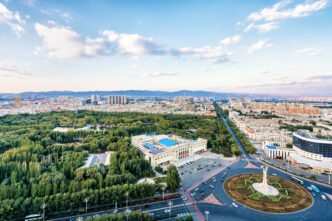Executive Summary
- China has increased the maximum hiring age for some civil service positions from 35 to 38, and for candidates with master’s or doctoral degrees from 40 to 43.
- This policy change aims to address age discrimination, particularly the “curse of 35,” and retain older workers to combat China’s shrinking workforce.
- The adjustment aligns with China’s broader strategy to progressively delay the legal retirement age and manage its acute demographic challenges, including an aging population.
The Story So Far
- China’s adjustment of the civil service hiring age is a direct response to the nation’s severe demographic challenges, including a shrinking workforce and a rapidly aging population, largely a consequence of its decades-long one-child policy. This policy change also seeks to address prevalent age discrimination in the job market, known as the “curse of 35,” and aligns with a broader government strategy to progressively delay the legal retirement age and sustain labor force participation.
Why This Matters
- China’s decision to raise the maximum civil service hiring age and progressively delay retirement ages signals a direct and strategic response to its escalating demographic crisis and shrinking workforce. These policy shifts are designed to combat age discrimination, retain older workers in the labor force longer, and mitigate the profound economic and social challenges stemming from an aging population, which is projected to have over 400 million people aged 60 and older by 2035.
Who Thinks What?
- Chinese authorities adjusted the maximum hiring age for some civil service positions to retain older workers longer in the labor force, address the country’s shrinking workforce, and manage demographic challenges.
- Older workers and netizens have experienced “age discrimination” in the job market, colloquially known as the “curse of 35,” where those over 35 often face rejection for jobs.
China has adjusted the maximum hiring age for some civil service positions for the first time in three decades, raising it from 35 to 38. This move, announced on Tuesday ahead of the national civil service exam application period, aims to retain older workers in the labor force longer and address the country’s shrinking workforce. The age limit for candidates with master’s or doctoral degrees has also been extended, from 40 to 43.
The changes align with China’s broader strategy to progressively delay the legal retirement age. The national civil service exam, scheduled for November 30, is set to recruit 38,100 new civil servants.
Addressing Age Discrimination and Demographic Challenges
The adjustment comes as China grapples with increasing age discrimination in its job market, a phenomenon colloquially known by netizens as the “curse of 35,” where older workers often face rejection due to perceptions of being less efficient. This issue has intensified amidst rising competition for state sector jobs.
China’s demographic challenges are particularly acute, exacerbated by the legacy of its three-decade-long one-child policy. Projections indicate that the population aged 60 and older will account for at least 40% of the total, or over 400 million, by 2035.
Earlier this year, China also began adjusting its retirement ages. For men, the retirement age was raised from 60 to 63. For women, it increased from 55 to 58 for white-collar workers and from 50 to 55 for blue-collar workers.
Implications for the Workforce
These policy changes reflect China’s efforts to manage its evolving demographic landscape and maintain labor force participation. By extending the hiring age for civil service roles and adjusting retirement ages, authorities are attempting to mitigate the economic and social impacts of an aging population and a shrinking working-age cohort.








